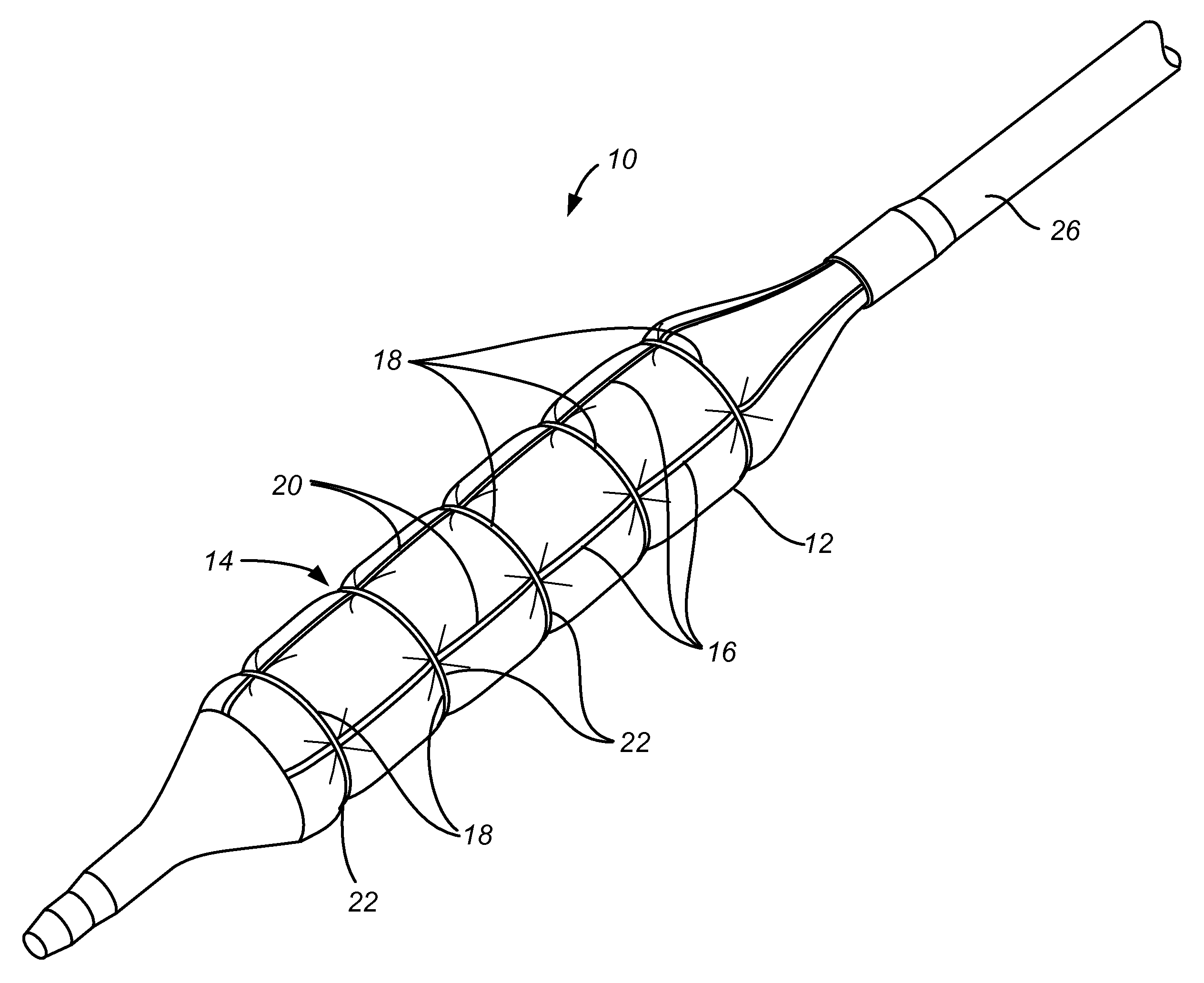Device and method for compartmental vessel treatment
a compartmental vessel and treatment method technology, applied in the field of medical angioplasty balloon catheters, can solve the problems of increasing the probability of trauma and dissection, and the geometrical design of cs expansion, so as to reduce the risk of trauma, minimize trauma and injury, and reduce the risk of excessive pressure on any one segment of the lesion.
- Summary
- Abstract
- Description
- Claims
- Application Information
AI Technical Summary
Benefits of technology
Problems solved by technology
Method used
Image
Examples
Embodiment Construction
[0027]The present invention provides a device for treating of diseased, blocked, occluded or stenotic lumens in the body, typically blood vessels including both arteries and veins, and more typically coronary and peripheral arteries. This device dilates occluded vessels while minimizing trauma to the lesion and luminal wall and reducing the risk of vessel trauma and injury. By placing an “elastic” constraining structure (CS) over a balloon of a balloon catheter, inflation of the balloon is controlled during balloon inflation and refolding of the balloon is aided as the balloon is deflated. The CS is designed to expand to a diameter smaller than the maximal diameter of the balloon when fully inflated. The CS structure applies radial resistance to inflation and is thus able to constrain the balloon and distribute or buffer the internal high pressure applied by the balloon to the luminal wall thus providing a controlled and less traumatic dilation process. The balloon which is typicall...
PUM
 Login to View More
Login to View More Abstract
Description
Claims
Application Information
 Login to View More
Login to View More - R&D
- Intellectual Property
- Life Sciences
- Materials
- Tech Scout
- Unparalleled Data Quality
- Higher Quality Content
- 60% Fewer Hallucinations
Browse by: Latest US Patents, China's latest patents, Technical Efficacy Thesaurus, Application Domain, Technology Topic, Popular Technical Reports.
© 2025 PatSnap. All rights reserved.Legal|Privacy policy|Modern Slavery Act Transparency Statement|Sitemap|About US| Contact US: help@patsnap.com



